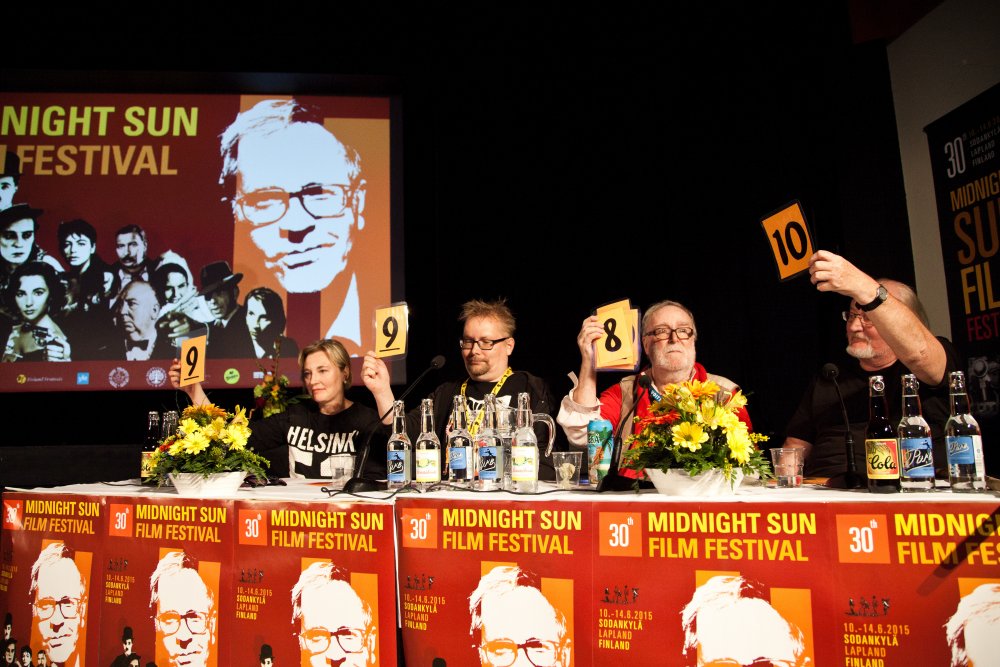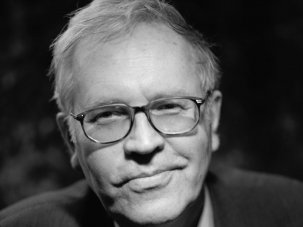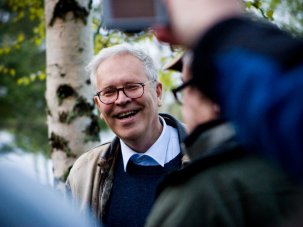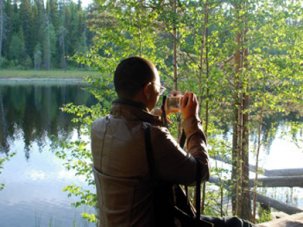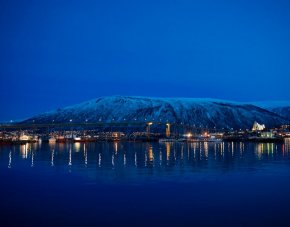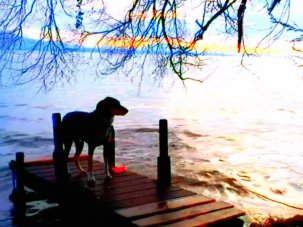Pier Paolo Pasolini abandoned Palestine as a possible location for The Gospel According to Matthew (1964) because the inauthenticity of the new age had defiled the holy land. That Pasolini’s documentary Sopralluoghi in Palestina (1964) comes to mind at the Midnight Sun Film Festival is something of a broken signal as it isn’t part of the festival programme.
10-14 June 2015 | Sodankylä, Finland
Sodankylä lies north of the Arctic Circle and is bathed in round-the-clock sunlight. The festival unfolds as a celebration of light whose comparison to religious ritual is evident enough to the Finnish pastor-cum-pamphleteer tearing up the dance floor as if there was no tomorrow. He has just witnessed a 70mm print of Derzu Uzala (1975).
A more pagan festival atmosphere arrives during the singalong screenings in the new circus tent acquired by the festival with room for 1,500 viewers. The carnal delights of Prince vehicle Purple Rain (1984) are accompanied by Finnish funkmeister Sam Huber who whips the crowd into a mood bordering on the orgiastic.
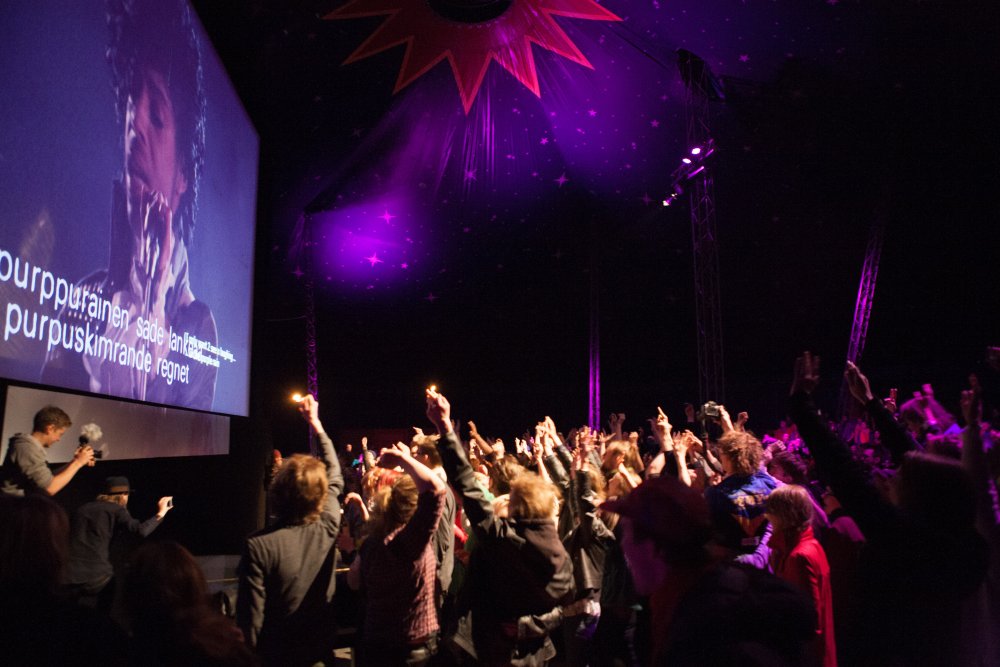
Dancing to Purple Rain
Credit: Sini Juutilainen
The heightened atmosphere at the 30th edition of the festival is apocalyptic in tone. Henceforth the event will be remembered in terms of its editions before and after festival director Peter von Bagh (1943-2014). In his last year, as he was coughing ominously, the digital hold on the festival had tightened. As a defender of photochemical magic von Bagh viewed this turn as akin to the triumph of evil. Others felt that the man of principle was burying his head in the sand.
Since 1998 I have witnessed, as a visitor, festival employee or journalist, the morning discussions conducted by von Bagh with such citizenry of cinema as Wim Wenders, Terry Gilliam, Francesco Rosi, Bob Rafelson, Francis Ford Coppola, Abbas Kiarostami, Milos Forman and John Boorman. The sensual director Philip Kaufman, whose The Right Stuff (1983) landed in the festival circus tent in 2013, wrote in a posthumous letter to von Bagh:
“You knew Film’s every intimate detail, Her secrets, private places of pleasure and whims… You stood ready to draw your sword like Ulysses to slay false suitors, those who exploited and brutalised Her. You protected Her past… and you raged against those who in the future would violate her by removing her pixels.”
-
New Midnight Sun Film Festival director Timo Malmi
Credit: Santeri Happonen -
A queue for the opening of the 2015 Midnight Sun Film Festival
Credit: Sini Juutilainen -
Opening night at the 2015 Midnight Sun Film Festival
Credit: Sini
The new artistic director Timo Malmi has of course been handed an impossible task. This year’s opening ceremony demands a suspension of disbelief for optimism to take root; the atmosphere is rather dismal and suffused with the desire for ritual. Von Bagh was after all a brilliant trailblazer; Malmi is far from a showman and committee member Aki Kaurismäki has withdrawn to the womb of the festival refreshments tent. A curious Mike Leigh is present as Vera Drake (2004) has been chosen to be the festival’s official opening film. In the following hours Leigh himself slips into the crowd and becomes a natural part of the Sodankylä audience.
Von Bagh would probably have been spinning in his grave had he heard that Leigh’s morning discussion would be broadcast live on television with a representative from the ranks of the event’s sponsor, the Finnish Broadcasting Company (YLE). The guest interviewee is repeatedly interrupted at those junctures when the conversation is finally hitting its stride, while the discussion is TV-commentated on as if it were a sports event. Perhaps YLE is the big fish that will define the future nature of the festival.
The desire to protect innocence seems common among many experienced filmmakers; not least in von Bagh’s last collage Socialism (Sosialismi, 2014). By collaging dozens of cinematic excerpts it describes the beauty and impossibility of utopia amidst human pettiness and greed.
-
Aki Kaurismäki and Anssi Mänttäri
Credit: Juho Liukonnen -
Mike Leigh
Credit: Juho Liukonnen -
Aki Kaurismäki and Mike Leigh
Credit: Santeri Happonen -
Aki Kaurismäki and Mike Leigh
Credit: Santeri Happonen -
Mike Leigh
Credit: Santeri Happonen -
Mike Leigh
Credit: Santeri Happonen -
Miguel Gomes
Credit: Santeri Happonen -
Christian Petzold
Credit: Juho Liukonnen -
Whit Stillman
Credit: Juho Liukonnen -
Credit: Juho Liukonnen -
Whit Stillman
Credit: Santeri Happonen -
Małgorzata Szumowska
Credit: Juho Liukonnen -
Whit Stillman and Mika Kaurismäki
Credit: Juho Liukonnen -
Mike Leigh and Miguel Gomes
Credit: Santeri Happonen
Jean-Luc Godard’s 3D essay Goodbye to Language (2014) receives its Finnish premiere at the festival. Godard defines the dog as “the only creature that loves another creature more than itself,” seemingly apologising for the constant destruction wrought by humanity. At the same time he provides a generous visual and aural landscape which disrupts the conditioning of viewers, awakens their senses and allows space for thought.
“Beware of shattered memories,” Godard cites Louis Aragon. “Beware of men who wear a yellow tie,” is the warning festival co-founder Anssi Mänttäri issues to a girl in his new melancholic film Black Dog on My Shoulder. The festival organisers should also consider another epigram of this director and festival mascot: “The secret of success is a lack of self-critique.”
As a third of the local restaurants’ annual revenue derives from the five-day festival it is also clear that not only art and festival atmosphere battle for the hearts of festival management. The festival could suffer the same fate as the communist who slowly yields to the siren call of social democracy. The efficient DCP mode of exhibition is as welcome in Sodankylä as a Starbucks mug is in a Kaurismäki picture.
-
Credit: Juho Liukonnen -
Credit: Ella Karttunen -
Credit: Ella Karttunen -
Credit: Juho Liukonnen -
Credit: Ella Karttunen -
Credit: Ella Karttunen -
Credit: Ella Karttunen -
Credit: Juho Liukonnen
Headlining guests alongside Leigh include Nils Malmros, Whit Stillman, Christian Petzold, Miguel Gomes and Malgorzata Szumowska. Frank Borzage’s divine Lucky Star (1929) rolls on to the strands of Antonio Coppola’s splendid piano accompaniment only to be followed by the premiere of a dreadful Finnish comedy. Festival attendance rose by 15 per cent with 30,000 screening tickets sold.
The dialogue between film and nature still retains an elusive magic. A deluge of rain pummels the big tent as a similarly drenched wedding party is depicted on screen in the 70mm copy of the Soviet film The White Bird Marked with Black (1971). The series of Slovakian films includes Dusan Hanák’s Pictures from the Old World (1972), the poetic, essayistic and surrealistic rural depiction that leaves nary a dry eye in the audience. The dignity, fragility and uniqueness of life is deeply felt in this work as the celluloid journey towards home hits the final stretch. “Life, sure” says the film’s aged and dentally challenged farmer.
Quo Vadis Sodankylä. The festival is at a paradoxical crossroads: its charm lies in an almost unchanging concept yet cannot continue sustained only by old principles if it to avoid the aura of hypocrisy. At the moment it seems to be unable to define itself. If lines are not drawn then the audience might start to wander and fragment internally. Let’s hope that cinephilia carries the day.
Translated by Jason O’Neill.
-
Credit: Juho Liukonnen -
Credit: Juho Liukonnen -
Credit: Santeri Happonen -
Credit: Saana Kotila -
Credit: Sini Juutilainen -
Credit: Sini Juutilainen -
Credit: Sini Juutilainen
-
The Digital Edition and Archive quick link
Log in here to your digital edition and archive subscription, take a look at the packages on offer and buy a subscription.




